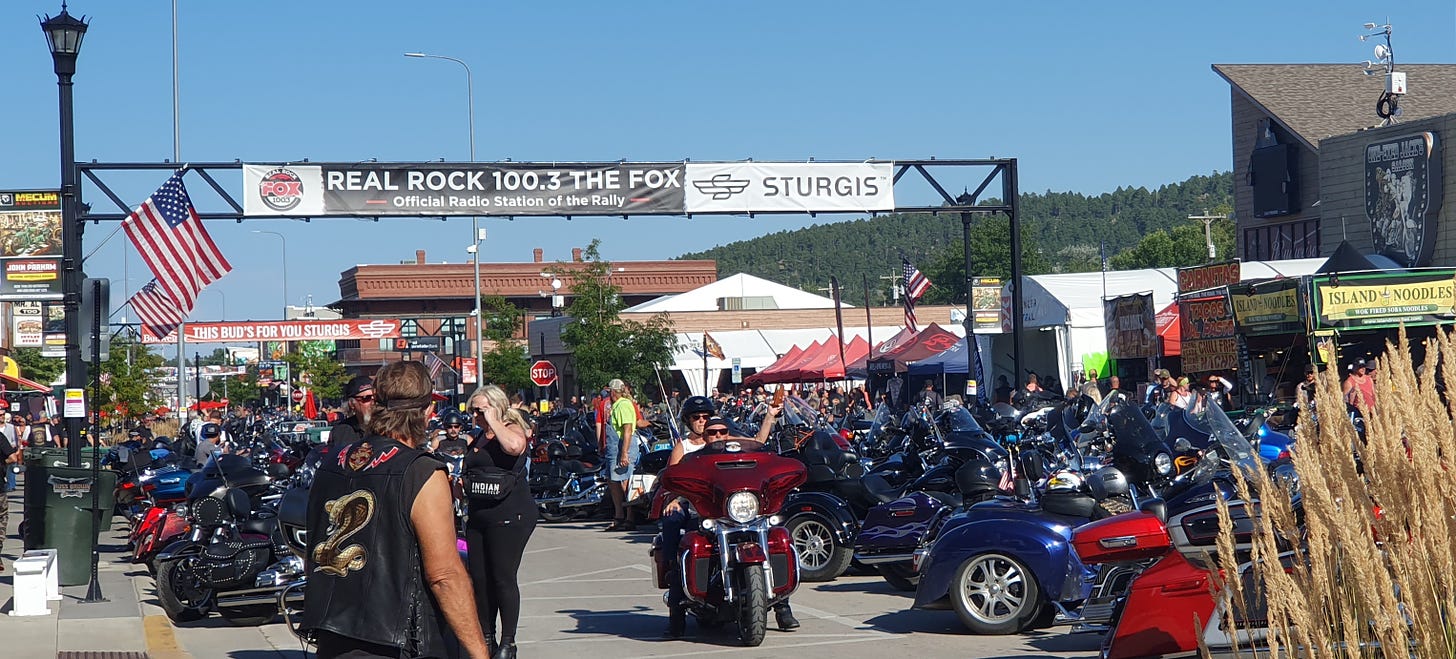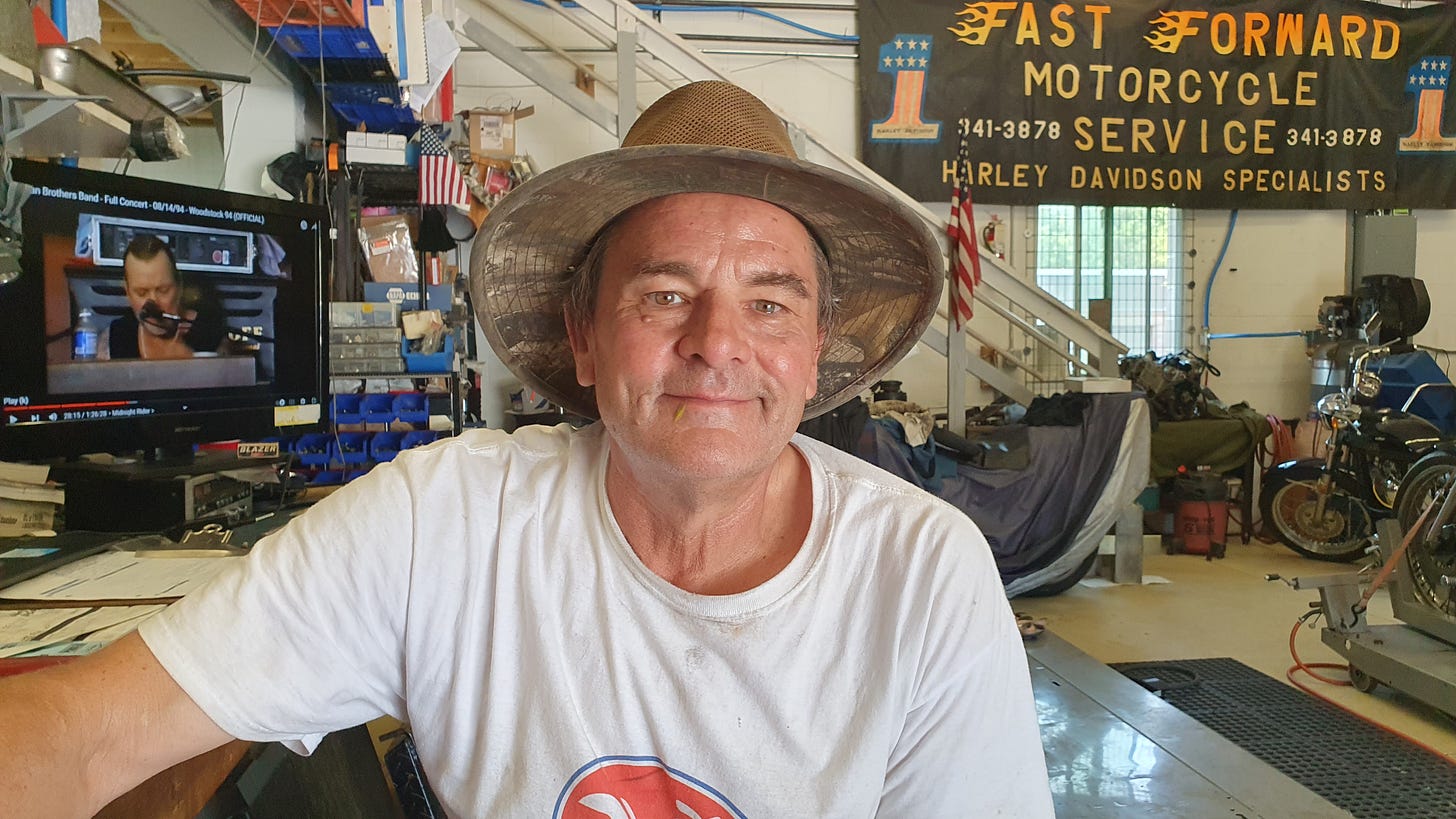The “Sturgis” in the US state of South Dakota is considered one of the largest biker gatherings in the world. It kicks off on the first Friday in August. The Black Hills make motorcycling here something very special.
I'm in Sturgis, South Dakota, walking along Main Street. It is closed to cars during the motorcycle rally. A procession of bikers ride their Harley Davidson bikes at walking pace as if at a fashion show. The chrome of the handlebars and rims gleams in the afternoon sun. First impression: most bikers are male and 50+.
“The first time I came up here was 72. I come back every year and think it got so damn commercialized, I don’t come anymore. But here I am.”
“I don’t think it is as wild as it used to be. During the week it is more old school partying. More drinking, more nudity, more everything that used to be bikerish.”
“Sturgis Rally is what you make it. If you want to party, you party. Or you ride your bike up and down the street. Or you buy stuff. It is all about what you wanna do.”
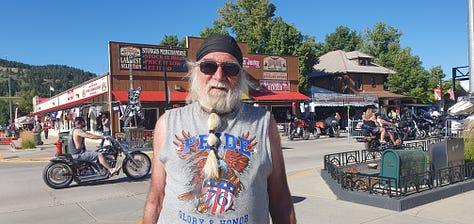
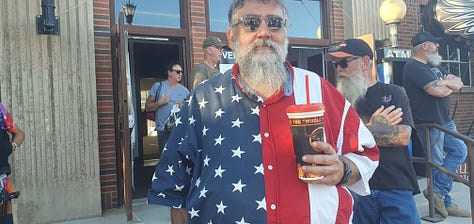
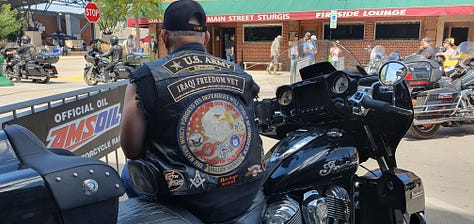
“I like the atmosphere. The people are super friendly. And the ride is spectacular out here. Very beautiful”, another biker assures me who still has a few years to go before he is 50.
The Black Hills form a magnificent backdrop for motorcycling. High season for Greg Davis, who runs a workshop for Harley motorcycles half an hour's drive away in Rapid City. Davis attributes the fact that fewer bikers than usual came this time not only to the rainy weather, but also to inflation in the country. “Unemployment is low. But full employment does not necessarily mean that working class people have any money. It might just mean that they have two or three jobs that they are trying to get by and feed their kids. I still see the really high-end customers coming here with their motor homes and the big trailers. But I do not see many what I call working class people.”
Three men in their 40s in black biker outfits wait outside the workshop for Davis to repair a flat tire. Patrick, Mike and Ben work in marketing and as lawyers in their normal lives and come from the neighboring state of Iowa. They have been sitting on their Harleys for ten hours on their way to Sturgis. Their wives follow them in their SUVs with all the supplies. “The girls will not ride the motorcycles for ten hours straight”, Mike says. “Not our wives!” And laughs. “There are certainly women who would do it.” And Patrick says Harley Davidson is now focussing its marketing on minorities and women “because they already got the middle aged guys.”
Most of the women at the rally are "biker moms" though, sitting on the back of the pillion seat. Female bikers are still in the minority. I tell Davis about the women with the painted breasts whom I saw on Main Street and the man who was riding his bike only dressed in a fur hat and loincloth. And that I have the impression: For ten days, ordinary people "go all Easy Rider" here. Easy Rider certainly lit a fire in many young guys. The out-law motorcycle culture was really prevalent in those days. It was really the Wild Wild West out here in South Dakota, there wasn’t much law enforcement.”
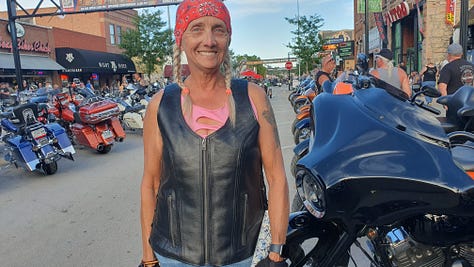
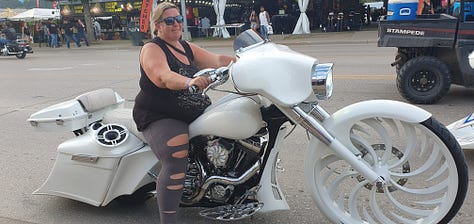
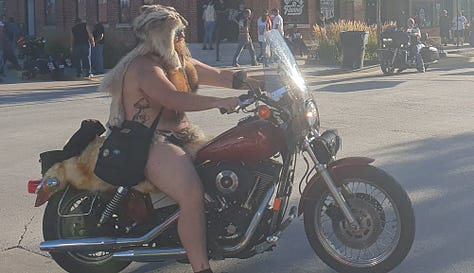
The rally was launched in 1938 when Pappy Hoel, the local motorcycle dealer, organized the first rally on the field behind his store. He also let the riders camp there free of charge. His and other bikers' wives catered for the riders. The races all took place in the immediate vicinity of the town park that time. With his motorcycle club, the Jackpine Gypsies, Hoel organized the rally until the 1980s. Then the whole thing got too big and the municipality took over. That's when the commercialization began, says Ron Rhebb, who is also from the area. “People used to come who would ride their motorcycles without windscreen, they just put their bedroll on and ride out. And now it’s become a kind of elitist thing because bikes cost 35.000 up to 65.000 dollars. So it’s mostly older guys near retirement that can afford it.”
However, many of the already graying motorcycle novices are overwhelmed when they have to take hairpin bends in the Black Hills. Ten to twenty fatal accidents per rally were not uncommon in the past. There are now introductory courses for beginners and alcohol is served in a controlled manner. “They have a new rule that you can drink that you can drink on the streets as long as you have it in a container that’s provided by one of the bars. So people don’t go to their campground to drink and come back to Sturgis but drink in Sturgis which before was against the law.”
The bloody feuds between motorcycle clubs have also come to an end. Instead, the Hells Angels now sell "Sturgis" T-shirts as souvenirs alongside other dealers in Main Street. A lot of things used to be different, says Greg Davis: “In the old days, it was a very dangerous thing for anyone who was non-white to come to the rallye. There was a very strong supremicist culture in the biker world. Those days have been over for thirty years. People of any race in the sun are welcome here now.”
A group of indigenous women organize a tour during the rally, which they call the "Medicine Bike Tour". The biker activists want to draw attention to the fate of the many missing and murdered indigenous women. After an introduction and traditional singing a tribal elder reminds “everybody who is not native here” that they are standing on stolen land. And then they go: gas pedals are kicked and the engines of an estimated two hundred bikes hum away. The two-wheeled caravan sets off - with the indigenous women activists at the front. The tour will last 90 minutes and end at the monument to Crazy Horse, one of the great chiefs. Because I have my car parked in Sturgis, and the women will not return here I have to miss out on riding with them and make this following video at least (©Rebecca Hillauer).
Two days later I watch the Hill Climb race. An event on the property of the Jackpine Gypsies, the successors of the rally founders: The riders race up a steep, sandy hill on motocross bikes. The fastest to the top is the winner. I can barely believe my eyes: a tiny little boy of no more than five years old is at the start. He's wearing racing kit and sitting on a real cross bike - all in miniature. A few girls are also taking part.
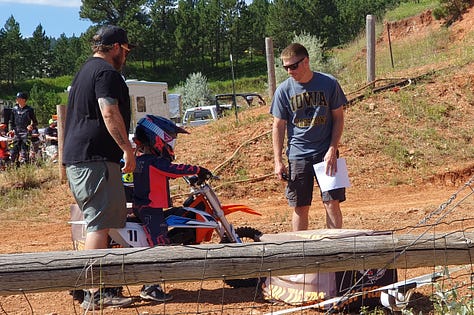
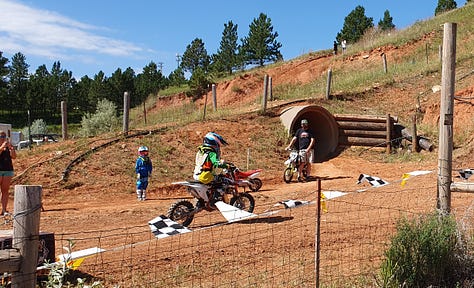
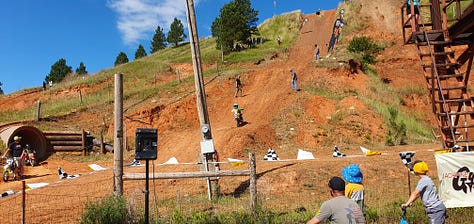
After two hours, I've had enough. I let myself drift back down Main Street with the stream of visitors. An old hippie, his long white beard braided into a thin plait, mourns the old days.
“It started out as a bikers rally and it was a lot of fun. But it’s just got commercialized now. Just a big party. Everybody brings their motor homes, their two kids and their puppies and everything else. I don’t think that is much of a biker rally.”
The town of Sturgis has also changed over the decades. Normally around 7,000 people live here. There are around 30,000 in the district, and up to twenty times as many visitors come to the rally. Campsites spring up like mushrooms. Locals rent out rooms or their entire house, garage or yard - for a lot of money. Those who don't own their own home may have to leave their home or store for the duration of the rally, while the owner rents out the space to visitors at a much higher price. Lauren Baylet, who has lived in Sturgis for forty years, explains. “For example, the owner of the office supply store had to get all her supply in boxes and put it into a garage and move it back into the store again after the rally. Sturgis which was a typical old-fashioned cow town lost all its support retail. When the rally isn’t here, the only shops open are t-shirt shops and tatoo parlors. Everything else that was on Main Street, the jeweller, the department store is gone.”
The entire infrastructure is geared now towards the rally, which generates millions in revenue for the city and many private individuals every year. “Once we saw the rally getting bigger we saw a lot of structures be torn down and replaced by paved lots”, recalls Lauren Balyet. “They are being let to vendors during the rally. So when it is off-season you see nothing but empty paved lots.” Hard to imagine during the rally - when the city center is packed with people.
The next day, while strolling down Main Street again, a biker invites me for a ride on his Harley. His name is Ivan and he was stationed in Germany thirty years ago. He can still speak a few words of German. Our destination is the Full Throttle Saloon. According to the website, it's the world's biggest biker bar. It’s amazing: at the front of the store, there are countless types of liqueur and house-brand whisky for sale. Behind it is a large factory hall with a music stage. Everything in industrial style. Discarded motorcycles, cars and buses hang on the walls and there is a rusty railroad bridge outside. In the many campgrounds around Sturgis, too, the parties go late into the night. Also in the bars and saloons in the city center.
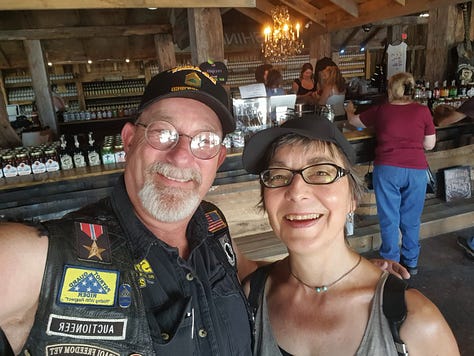
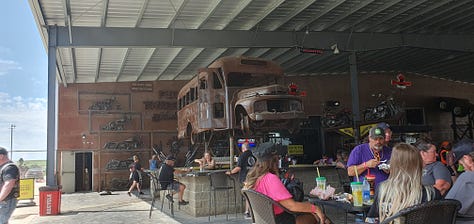
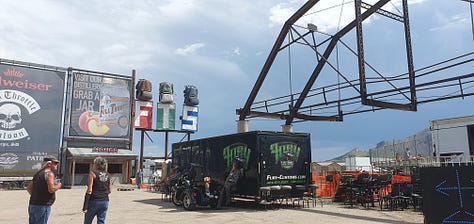
As I drive through town late at night, the bass of music from various pubs booms in my ears through the open car window, I think: How happy the locals will be when the bikers are gone again - and with them all the noise.
This is my recollection of the rally 2023. I’ll be back for the 85th Sturgis in 2025!
This text is a translated transcript of my TravelRadio report in German. Listen here.


